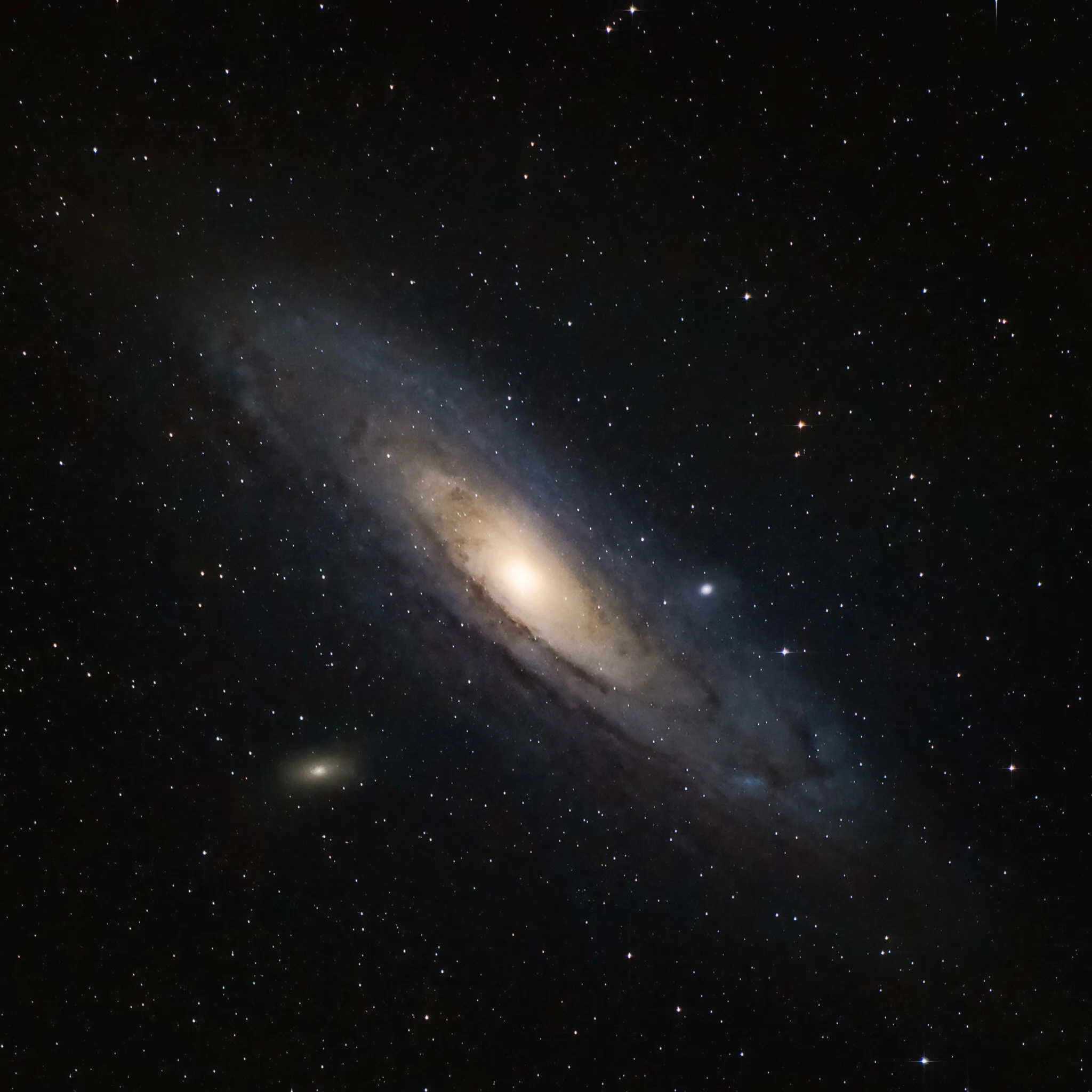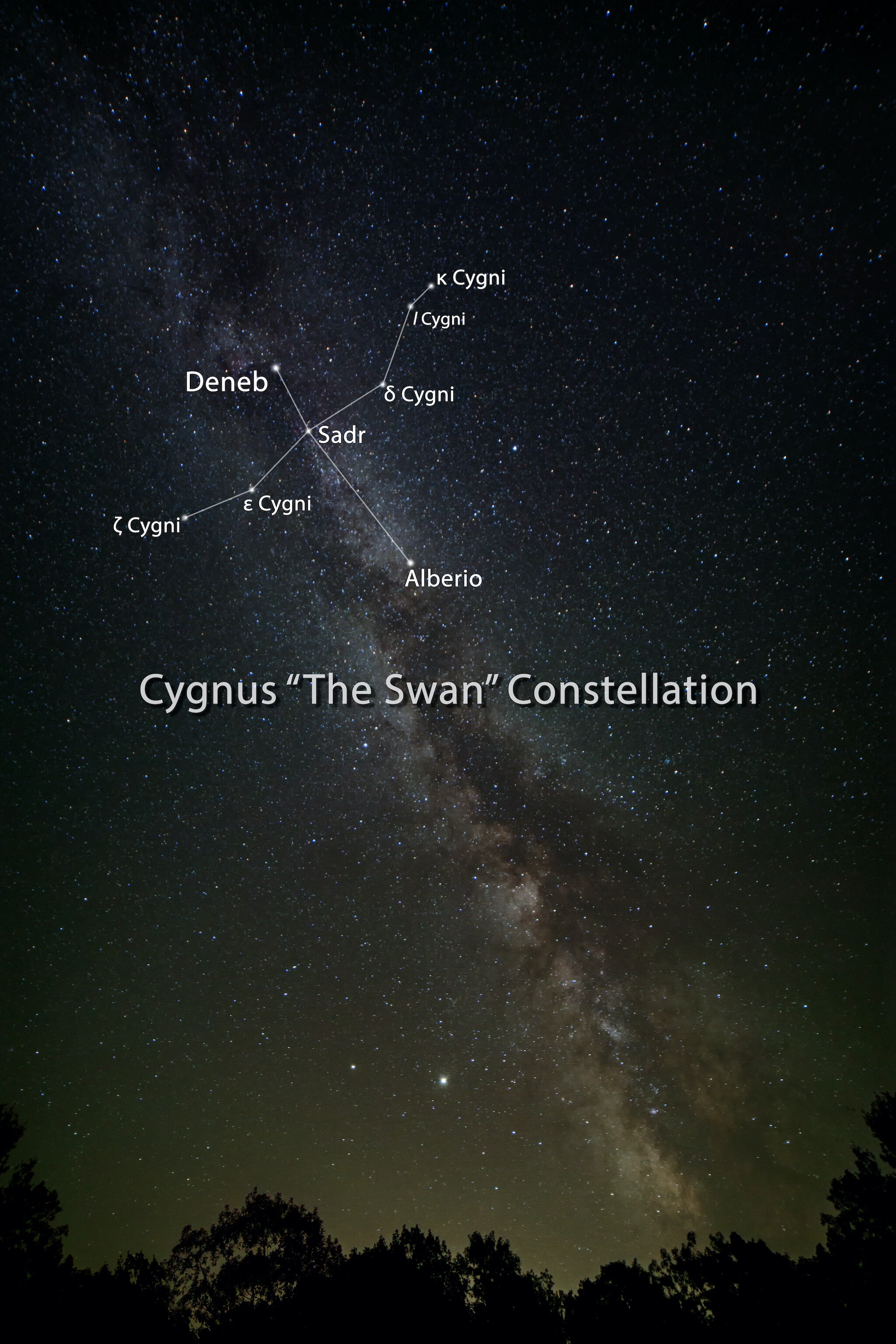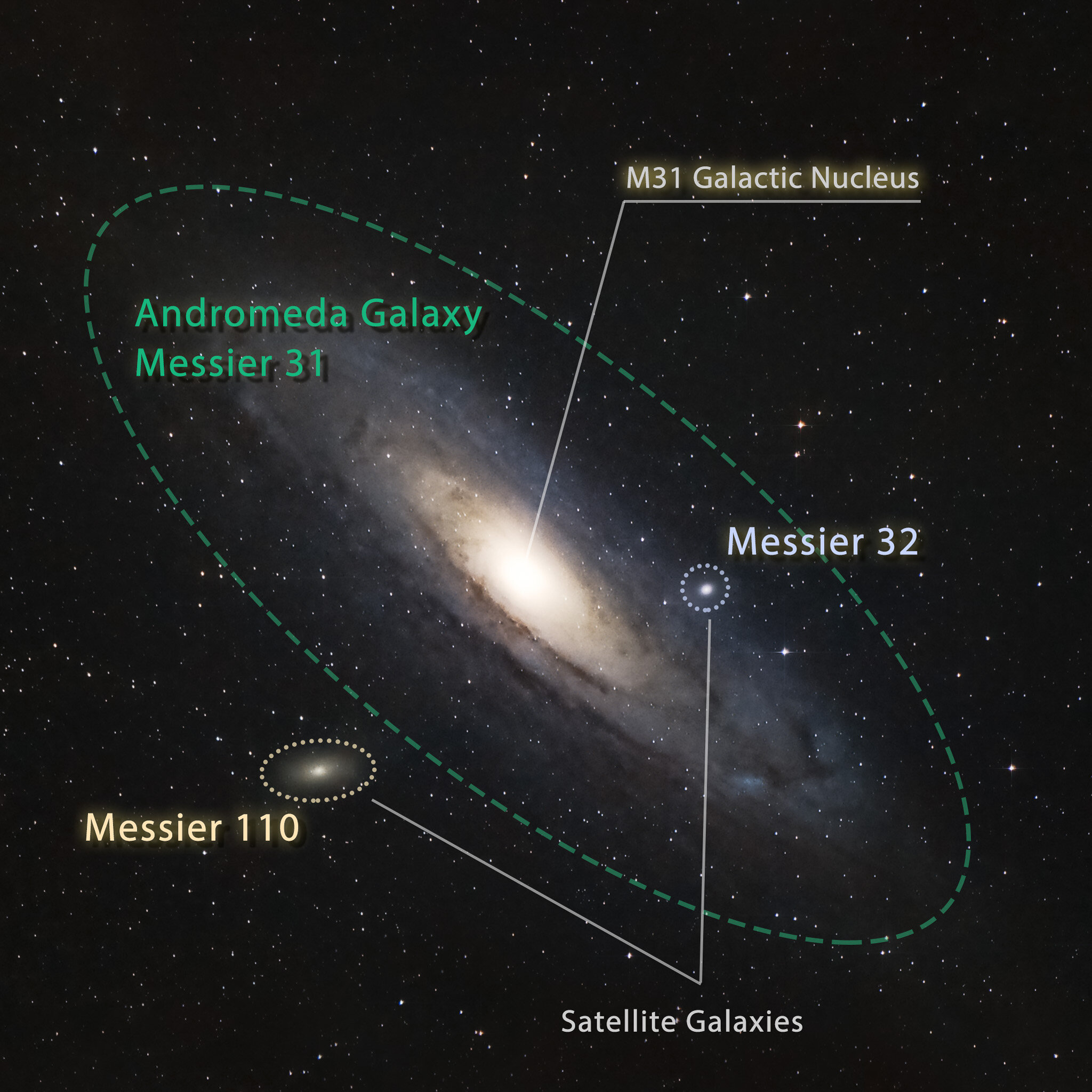The Night Sky - Episode 2
ANDROMEDA
Here’s a look at the Andromeda galaxy. Watch the video below to learn how to locate Andromeda in our night sky and see a close-up view. And scroll on to read more about our neighbour.
This is episode 2 in my series on our night sky. View episode 1 here.
The Andromeda galaxy is the nearest major galaxy to our own galaxy, the Milky Way.
The galaxy is named after the region in the night sky where it appears — near the constellation of Andromeda, who is the wife of the hero Perseus in Greek mythology. Even though it is our closest neighbour, it is over 2.5 million light-years away. This means that what we see of Andromeda is as it appeared over 2.5 million years ago! That is older than when humans existed as a species on this planet. In essence, we are peering back in time as we observe this galaxy. The Andromeda galaxy is also known as Messier 31 (or M31).
Here is an image of the Andromeda galaxy.
Image created using a Canon 6DMarkII camera at a focal length of 300mm, f/5.6, ISO 3200. A total of 30 images each of 120 seconds exposure were captured and stacked.
To understand where to look in the night sky to find the Andromeda galaxy, let us start with our own galaxy, the Milky Way.
Our galaxy, the Milky Way as seen in the night sky in the northern hemisphere during the summer months. One constellation, Cygnus (the swan), is marked out. Image is at 14mm field-of-view.
The location of the Cygnus constellation, a prominent pattern of stars, is shown above. Read more about this constellation in my previous post about the Deneb-Sadr region in Cygnus. We can use this constellation to locate the Andromeda galaxy.
Using Cygnus to locate Andromeda. Image is at 24mm field-of-view.
We can use Cygnus to locate the constellation Cassiopeia which is found by following the line formed by the tail of Cygnus. Cassiopeia can be visualised as an inverted “W”. Draw a straight line from the first dip of the “W” shape in Cassiopeia. Andromeda appears as a faint smudge in the night sky along this straight line.
The Andromeda galaxy as it appears to the naked eye in the night sky. Image is at 70mm field-of-view.
The Andromeda galaxy is best viewed in a location with dark skies. Dark skies can be found in locations with low levels of ambient light pollution, usually far away from population centres. The brightness of the night sky in a particular location is measured using the Bortle Scale. The Bortle Scale runs from class-1 (lowest light pollution and best viewing of the night sky) to class-9 (highest light pollution and worst viewing of the night sky) The images on this page were taken in a location with Bortle class-3 skies.
Here’s an annotated image of a close-up of the Andromeda galaxy.
The Andromeda galaxy, it’s nucleus and two prominent satellite galaxies. Image is at 300mm field-of-view.
The core of the galaxy (galactic nucleus) is composed of two concentrations of dense and compact star clusters. One concentration contains a black hole estimated to be ~100 millions times as massive as our Sun.
Like many other galaxies, Andromeda has a number of smaller satellite galaxies. Two prominent satellite galaxies visible in the image above are Messier 110 (M110) and Messier 32 (M32). Both satellite galaxies show evidence of recent or ongoing star formation.
An artistic rendering of the rotation of the Andromeda galaxy disc around its nucleus.
The Andromeda galaxy is hurtling through space towards our own galaxy at a speed of ~400,000 km/h. It is expected to collide with our galaxy in about 4.5 billion years resulting in both galaxies merging to form a giant elliptical (or perhaps disc-shaped) galaxy. Scientists are unsure what the fate of our Solar System would be in such an event.







